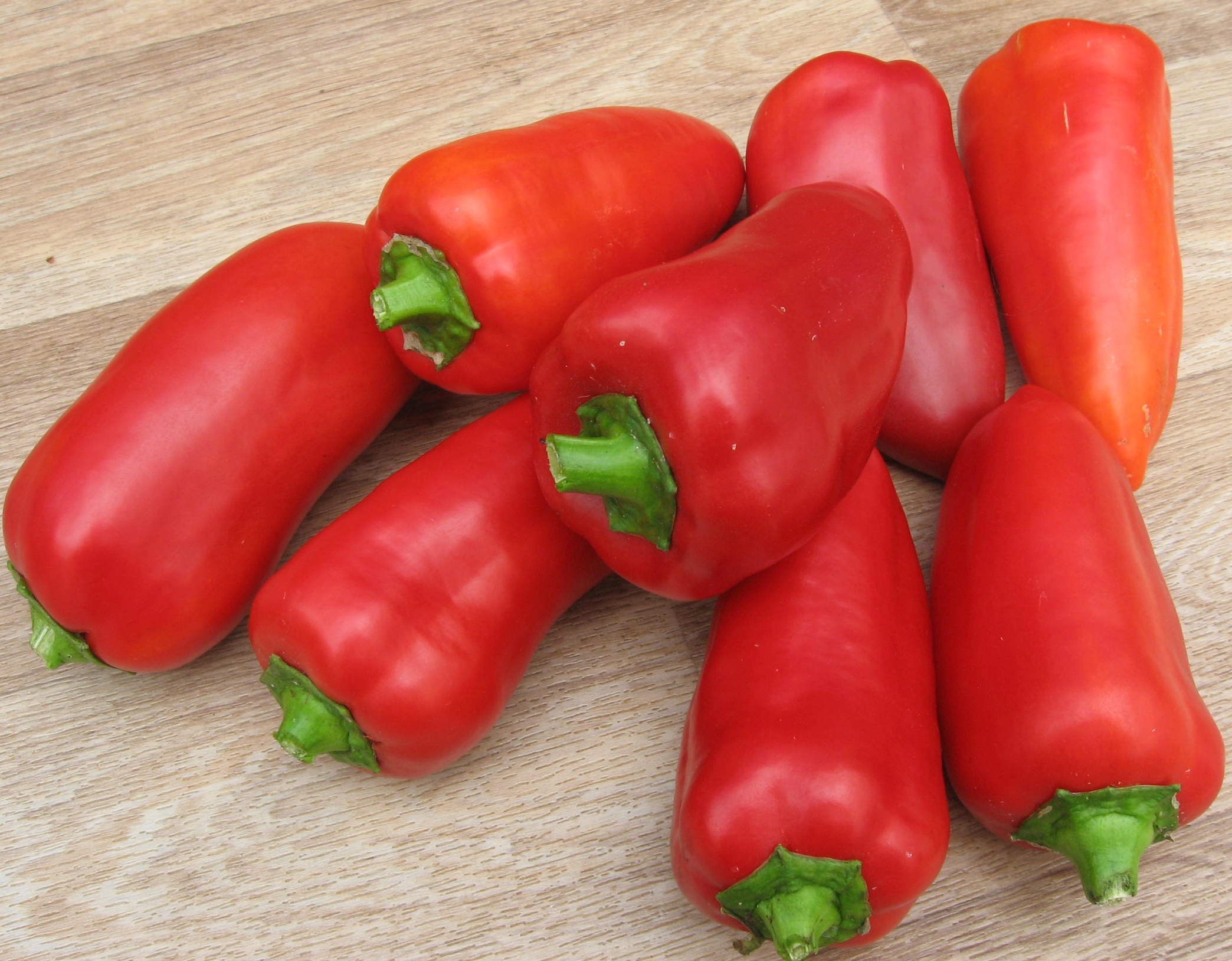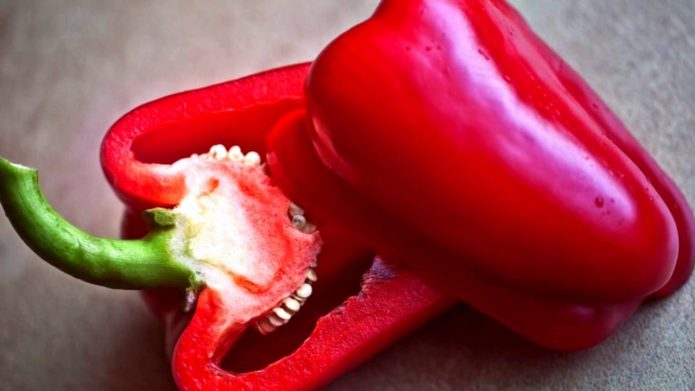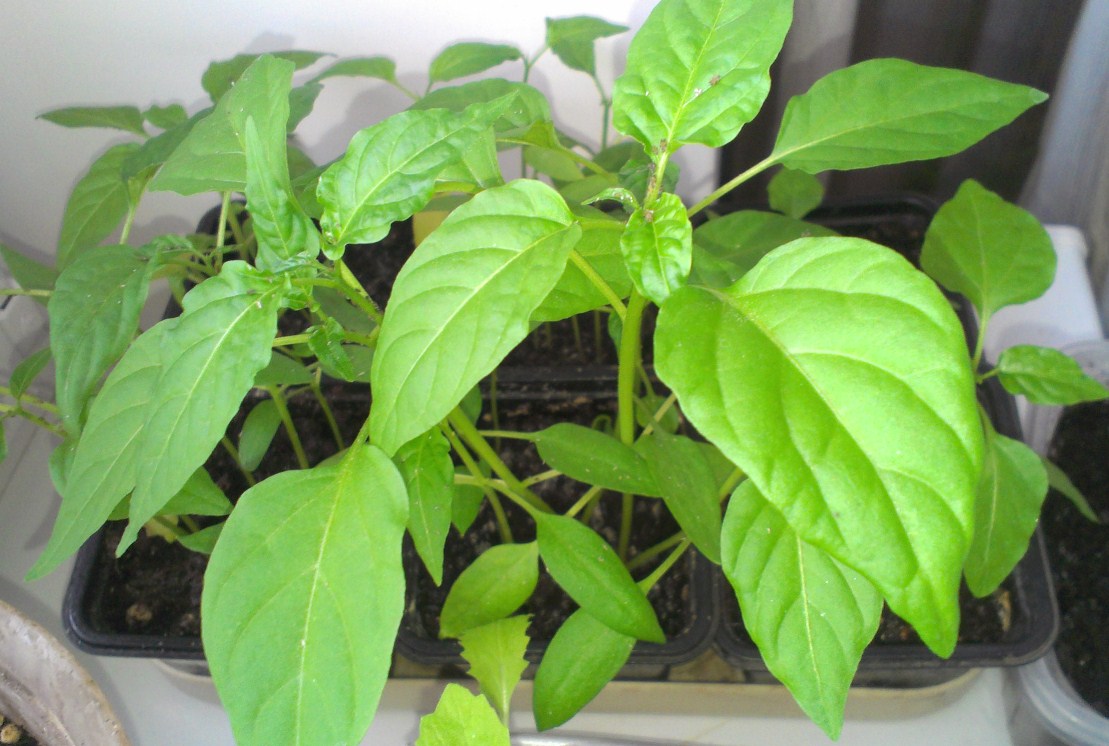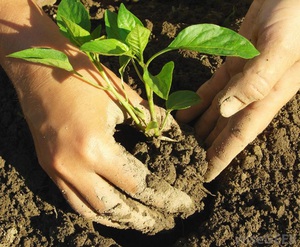 Almost all gardeners grow sweet and bitter peppers on their plots. The heat-loving culture is very popular. Taste qualities, a large composition of vitamins and trace elements made the vegetable very popular. Many gardeners grow their own vegetable seedlings. Some people buy it in the market to plant it in the beds or in the greenhouse.
Almost all gardeners grow sweet and bitter peppers on their plots. The heat-loving culture is very popular. Taste qualities, a large composition of vitamins and trace elements made the vegetable very popular. Many gardeners grow their own vegetable seedlings. Some people buy it in the market to plant it in the beds or in the greenhouse.
Since the culture is thermophilic, it needs a careful attitude. She needs certain conditions for good development. How to grow pepper seedlings and when can they be transplanted into open ground?
Pepper root system and its features
Heat-loving vegetable belongs to nightshade crops... His homeland is Mexico and Guatemala, so he needs warmth, sunlight. The plant needs light loamy fertile soil. For good development, the vegetable is suitable for an air temperature from +22 to +28aboutC, if it is released below +15ABOUTC, the pepper is suspended in growth and development. Experts recommend taking into account the weather and climatic conditions of the region in which they will grow when choosing pepper varieties.
The root system of the pepper is very weak compared to other nightshades. It has poor regeneration ability, the root is fragile and breaks easily when transplanted. The pepper should not be planted too deeply, since the root collar retards the growth of the plant when deepening, it will hurt.
Many try to grow pepper seedlings on their own, but not all achieve a successful result. How to properly grow pepper seedlings on your own, dive or not, and when to plant them in the beds? What should you pay attention to when growing and transplanting peppers?
Sowing seeds
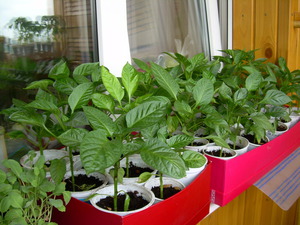 It is necessary to select vegetable seeds in February and sow after selection. Early sowing will give the opportunity to develop well, to get stronger seedlings. It is better to soak the seeds before planting and after they hatch plant in a container with potting soil... It must be selected as for tomatoes.
It is necessary to select vegetable seeds in February and sow after selection. Early sowing will give the opportunity to develop well, to get stronger seedlings. It is better to soak the seeds before planting and after they hatch plant in a container with potting soil... It must be selected as for tomatoes.
Pepper seeds are not very active, they do not germinate well, but they can be helped with this. For this purpose, a solution is made from various stimulant drugs such as "Zircon" and immersed in it for 20 minutes, after which you can sow in prepared cups. After seed germination, seedlings should be properly looked after. Seeds can be sown in two ways:
- in separate cups;
- into a large container.
In such a container, they can germinate until 2 true leaves appear, this happens about 30-35 days after germination. Seedlings need regular watering as the soil dries out. In no case should they be overfilled, since a large amount of moisture will lead to seedlings disease. For irrigation, settled water is used; you can add additional fertilizing in the form of calcium nitrate to it.
Peppers need good lighting, seedlings are best place on the sunny side... When there is not enough light, you can use LED lamps. On cloudy or short days of light, artificial lighting is usually used. In poor light, pepper seedlings will stretch upward.
Dive seedlings
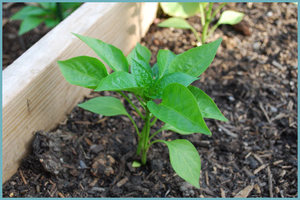 If the seedlings are dived, they will turn out to be stronger and will give a rich harvest in the future with proper care. You can start picking when the first leaf appears.Before this, the seedlings should be well watered. So, it is easier to get it out and transfer it to separate cups. Wet soil will allow you to quickly transplant seedlings without damaging the root system. The glasses must contain small holes in the bottomso that moisture does not linger and the root system can breathe.
If the seedlings are dived, they will turn out to be stronger and will give a rich harvest in the future with proper care. You can start picking when the first leaf appears.Before this, the seedlings should be well watered. So, it is easier to get it out and transfer it to separate cups. Wet soil will allow you to quickly transplant seedlings without damaging the root system. The glasses must contain small holes in the bottomso that moisture does not linger and the root system can breathe.
The soil in the cup should be well watered, then make a depression under the root of the seedling and carefully place. It is very important not to damage the plant's root system during transplantation. It is not recommended to deeply deepen the root, otherwise the seedlings will develop poorly. It is advisable to plant the seedling at the same depth where it grew earlier. It is better to choose cups with a volume of at least 0.5 liters so that the root grows well.
Experienced gardeners recommend that you take your time with diving peppers. It is best to wait until 2 real leaves appear and then dive the seedlings. Growing seedlings in peat blocks gives excellent results, the roots remain in good condition during transplantation.
After picking, pepper seedlings should be placed on the windowsill where there is most of the light, so that the plants are cozy and warm. Seedlings do not respond very well to direct sunlight. In the first 2-4 days, the seedlings can plant, but if the picking process was performed correctly, then it will quickly go away. Its root system will become stronger and soon it will develop further. Seedlings need feeding before planting in open ground or a greenhouse. Nitrogen and phosphorus are most commonly used, both of which stimulate growth and strengthen the root. It follows carry out in several stages:
- the first time when full leaves appear;
- a few days after the dive;
- 2-3 days before planting in a greenhouse or in open ground.
Transplanting seedlings into open ground or greenhouse
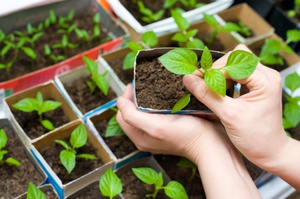 When the seedling has 3-4 leaves, the seedlings are ready for planting in open ground. Planting time depends on climatic conditions. This is usually done in the month of May, when there is no likelihood of night frosts.
When the seedling has 3-4 leaves, the seedlings are ready for planting in open ground. Planting time depends on climatic conditions. This is usually done in the month of May, when there is no likelihood of night frosts.
It is impossible to plant peppers in cold ground, it is better to wait until the temperature rises to +15aboutC. Before transplanting, the pepper must be watered and then proceed to disembark to the prepared bed. It is advisable to make the hole of the right size so that the pepper can easily be placed in it together with a lump of earth without injuring the root system.
Experienced gardeners add about 1 tablespoon of potash fertilizer to each hole. Then it is completely filled with water, allowed to soak and seedlings are planted. As already mentioned, it cannot be deeply deepened; it is desirable to leave it at the same level as it grew earlier. The soil around the seedling must be compacted, watered and, if the seedlings are tall, tie up.
Within 10 days, the seedlings should completely take root. This will be noticeable when the first leaf appears on it. Experts believe that after that it should also be fed with mineral fertilizers. Such feeding is best done every 10-14 days. Top dressing can be done from urea, potash fertilizer and superphosphate... The mixture is diluted in 1 bucket of water and 1 glass is poured under the bush.
Pepper bushes do not tolerate drying out of the soil, so the plants need regular watering. A good bed will be a piece of land located on the south side and protected from strong winds. Peppers love loose soil, so they need frequent weeding. So, the root system will contribute to the development of the vegetable, it quickly adapts to new conditions.
Given the climatic conditions in some regions of Russia, many gardeners grow peppers in greenhouses. This helps to protect vegetables from cold and aphids. Heat-loving peppers poorly tolerate temperature changes... In the greenhouse, the optimum temperature will be maintained at night.
Observing all the stages from sowing seeds to planting seedlings, properly caring for the garden, you can harvest a good harvest of sweet or hot pepper.Its taste will be much better than that bought in the market or in the supermarket.
